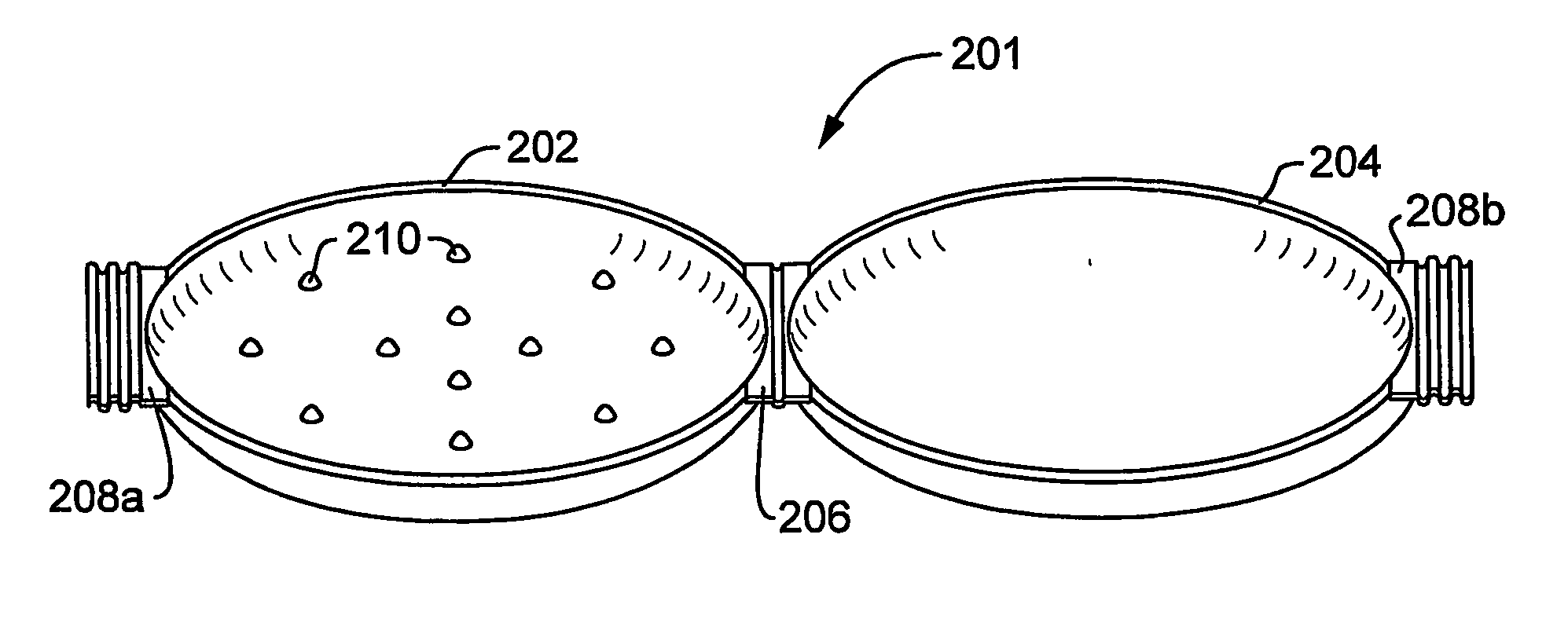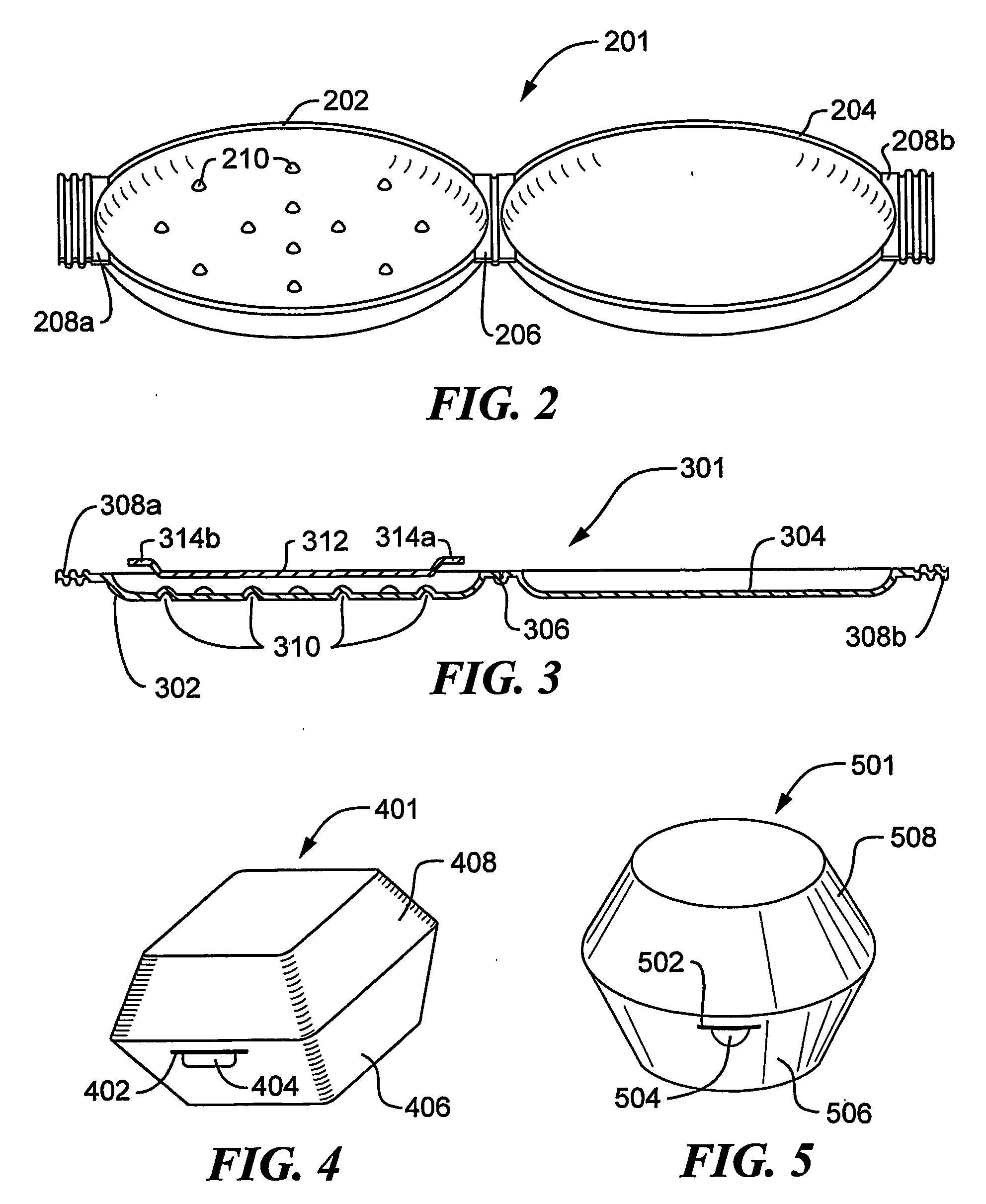Foamed pet packaging
a pet packaging and foil technology, applied in the field of foil pet packaging, can solve the problems of limited use, few materials or packages even approaching suitability, and the prior art packaging, which serves its limited use well, is too expensive for other uses, and achieves the effects of enhancing the maintenance of serving temperature, enhancing the taste, quality or safety of food, and reducing the risk of contamination
Active Publication Date: 2006-11-16
DART CONTAINER
View PDF2 Cites 22 Cited by
- Summary
- Abstract
- Description
- Claims
- Application Information
AI Technical Summary
Benefits of technology
The GIT process results in containers that maintain food quality by keeping it hot or cold, are suitable for various cooking methods, and are environmentally friendly due to high recyclability, reducing material costs and environmental impact.
Problems solved by technology
Despite the ubiquity and variety of such products, the prior art is subject to significant limitations.
Few materials or packages even approach suitability for all the uses to which food packaging is subject.
Some prior art packages, which serve their limited uses well, are too expensive for other uses.
Others are completely incapable of use outside of their limited area of applicability.
In addition, much prior art food packaging is recycled with difficulty, if at all, and therefore is environmentally costly.
However, polystyrene foam in general has little tensile strength and containers tear easily.
Further, because it has little heat resistance, polystyrene foam is unsuitable for more than brief warming in a microwave oven and is wholly unsuited to heating in a conventional oven.
In addition, polystyrene foam containers generally do not seal well and so are unsatisfactory for extensive storage of food.
Lastly, the geometry of objects that can be thermoformed with prior art ESF is quite limited, restricting height to depth ratios to considerably less than 1:1, and wall angles to no less than about 40 deg from vertical.
However, EBF foamed products have the same drawbacks of polystyrene foam products generally, and, in addition, EBF foamed products have even less tensile strength and durability than ESF polystyrene foamed products.
Regardless of method of manufacture, prior art foamed packaging suffers from a number of additional significant drawbacks.
Polystyrene foamed materials can't withstand high temperatures and therefore are not microwaveable or ovenable above, about the boiling point of water.
In addition, such foam containers usually lack quality, tight fitting lids, reducing their utility for food storage.
Finally, all prior art polystyrene foamed materials, regardless of method of manufacture, are non-biodegradable and have little value for recycling, and therefore are environmentally costly.
While coated cardboard containers may be microwaved and, in fact, if comprised of appropriate materials, may be used for limited cooking and reheating in conventional ovens, such containers are unsuitable for extensive cooking or for storage beyond very short term.
Further, the insulation properties of coated cardboard are slight, and clearly inferior to those of polystyrene foam.
Furthermore, because of non-degradable, non-recyclable laminations due to the plastic coatings required for significant food contact life, many such containers are scarcely more recyclable than polystyrene foam.
Most are rectangular in shape and many are not dimensioned for heating in home microwave ovens, and the cardboard material is unsuitable for use in a conventional oven.
Further, prior art pizza boxes are unsuitable for long-term storage, because they do not seal tightly, allowing pizza to become stale, and the cardboard material decomposes as it absorb oils and liquids from food contained therein.
Not only is such foam subject to the general limitations of polystyrene foam containers noted above, but its low heat resistance makes it unsuitable for receiving pizza immediately after cooking.
While polymer containers for frozen and other pre-cooked foods are commonly microwavable, many such containers are not adaptable for cooking in conventional ovens.
Solid polypropylene containers can be heated to about the temperature of boiling water for sterilization, but cannot withstand oven cooking temperatures.
Foil containers, while almost obsolete, are unusable in microwave ovens.
Regardless of suitability for microwave or oven, all such containers generally provide little if any thermal insulation for foods and are therefore unsuitable for maintaining foods at serving temperature.
In addition, such containers usually lack quality, tight fitting lids, reducing their utility for food storage.
Further, both foil and solid polymer containers are considerably more costly to produce than foamed polymer containers.
Longer-lived containers of the Tupperware sort provide excellent food storage but provide little thermal insulation.
Such containers are not heat resistant and so, while they may be used for fast heating in microwave ovens, they are unsuitable for longer cooking times and may not be used in conventional ovens.
In addition, such containers cost many times the cost of other containers considered herein.
While the newer, shorter-lived multi-use containers are considerably less expensive, they also suffer from shortcomings in insulation capability and heat resistance.
Yet a further limitation applicable to much of the prior art processes for production of food containers is that scrap material from the manufacture of such containers is generally of little value and, in fact, may require costly disposal.
Accordingly, the configuration of prior art food containers is often constrained by the need to minimize the scrap produced in their manufacture, thereby resulting in containers that are less than optimally shaped for their purpose.
Method used
the structure of the environmentally friendly knitted fabric provided by the present invention; figure 2 Flow chart of the yarn wrapping machine for environmentally friendly knitted fabrics and storage devices; image 3 Is the parameter map of the yarn covering machine
View moreImage
Smart Image Click on the blue labels to locate them in the text.
Smart ImageViewing Examples
Examples
Experimental program
Comparison scheme
Effect test
example 1
[0068] A pizza box used to sell frozen pizza.
example 2
[0069] Pizza boxes for “take and bake” pizza. The box is both used for transport and for cooking food in a conventional oven.
example 3
[0070] Pizza boxes for cooked pizza right out of the oven and insulated during the trip home by the consumer. “Take out pizza”
the structure of the environmentally friendly knitted fabric provided by the present invention; figure 2 Flow chart of the yarn wrapping machine for environmentally friendly knitted fabrics and storage devices; image 3 Is the parameter map of the yarn covering machine
Login to View More PUM
| Property | Measurement | Unit |
|---|---|---|
| wall angles | aaaaa | aaaaa |
| wall angles | aaaaa | aaaaa |
| pressure | aaaaa | aaaaa |
Login to View More
Abstract
This invention provides packages and containers produced by a solid state method for the manufacture of foamed polymeric material. The packages are suitable for pre-cooking or sterilization, insulated transport, cooking vessel, reheating, and storage of food. The gas impregnated thermoforming (GIT) process includes interleaving an article of raw polymeric material with a gas channeling means; exposing the article to a non-reacting gas at elevated pressure to achieve a desired concentration of gas within the polymer, thereby forming a partially gas-saturated article, separating it from the gas channeling means, then decompressing, foaming and forming it at a temperature below the material's melt temperature; and finally trimming it to produce a finished foamed polymeric material and recycleable scrap solid state process foamed polymer.
Description
CROSS-REFERENCE TO RELATED APPLICATION [0001] This application claims priority from U.S. provisional application No. 60 / 471,477, filed May 17, 2003, titled THERMOFORMED FOAMED THERMOPLASTIC PACKAGING.BACKGROUND OF THE INVENTION [0002] 1. Field of the Invention [0003] This invention relates to special receptacles or packages adapted to contain food and to receptacles used to cook food by means of a heat source. It also relates to packaging suitable for other, non-food purposes, when ease and economy of manufacture, thermal insulation, shape stability at high service or operating temperature, and heat and impact resistance are significant factors. [0004] 2. Description of the Related Art [0005] Products in which food is packaged, prepared and served are ubiquitous in modem life. Ranging from preparation, pre-cooking, presentation, serving, cooking, storage and reheating, uses to which such products are put vary widely. Further, ranging from single-use disposable packaging, through ine...
Claims
the structure of the environmentally friendly knitted fabric provided by the present invention; figure 2 Flow chart of the yarn wrapping machine for environmentally friendly knitted fabrics and storage devices; image 3 Is the parameter map of the yarn covering machine
Login to View More Application Information
Patent Timeline
 Login to View More
Login to View More Patent Type & Authority Applications(United States)
IPC IPC(8): B65D39/00B29C44/34B29C51/02C08J9/00C08K3/00
CPCB29C44/3446Y10T428/24983B29C44/348B29C51/02B29K2021/00B29K2023/06B29K2025/00B29K2027/06B29K2033/08B29K2067/00B29K2105/04B65D1/26B65D43/162B65D81/262B65D2585/366C08J9/122C08J2201/032Y10T428/24942Y10T428/1352Y10T428/24992Y10T428/1376B29C44/3453Y02P70/10Y02W30/62C08J9/00C08F2/01B29C44/34
Inventor BRANCH, GREGORY L.GUNTER, WILEY D.
Owner DART CONTAINER
Features
- R&D
- Intellectual Property
- Life Sciences
- Materials
- Tech Scout
Why Patsnap Eureka
- Unparalleled Data Quality
- Higher Quality Content
- 60% Fewer Hallucinations
Social media
Patsnap Eureka Blog
Learn More Browse by: Latest US Patents, China's latest patents, Technical Efficacy Thesaurus, Application Domain, Technology Topic, Popular Technical Reports.
© 2025 PatSnap. All rights reserved.Legal|Privacy policy|Modern Slavery Act Transparency Statement|Sitemap|About US| Contact US: help@patsnap.com



